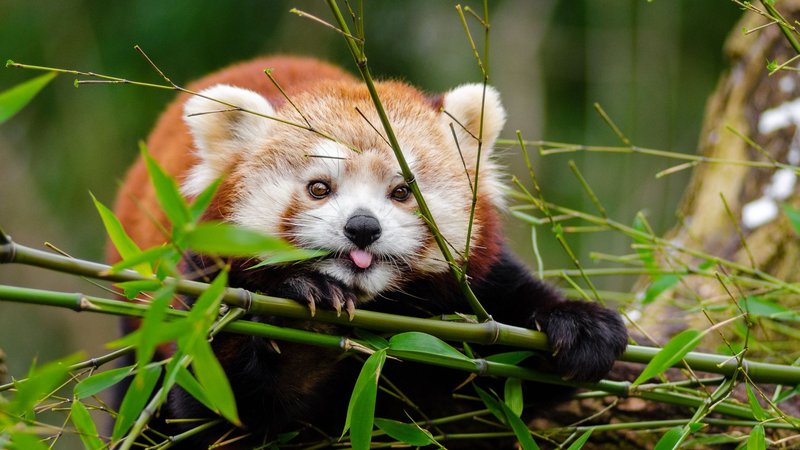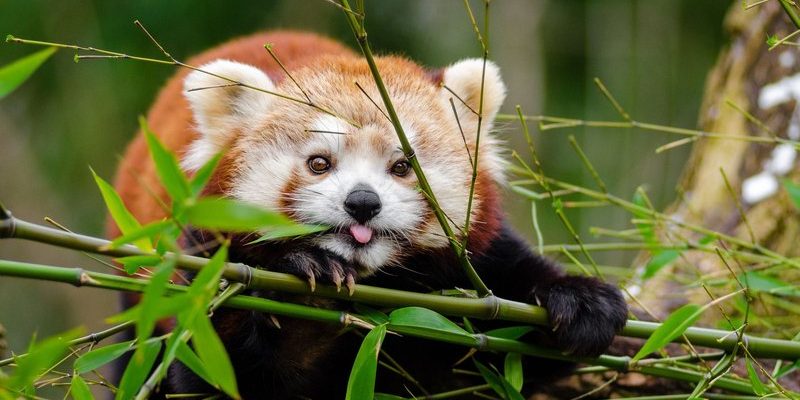
Red pandas, often dubbed “fire foxes” because of their vibrant reddish-brown fur, are native to the temperate forests of the Himalayas and southwestern China. You might be wondering why a creature like the red panda matters so much in its ecosystem. Well, let’s dive right in and unravel the impact they have, not just on their immediate surroundings but on the broader ecological web as well.
1. The Red Panda’s Diet and Its Impact
Red pandas are primarily herbivorous, with bamboo being their main staple, making up about 95% of their diet. You could say they have a “bamboo buffet” at their disposal! However, that’s not the whole story. When red pandas munch on bamboo, they don’t just fill their tummies; they also play a vital role in the growth and health of bamboo forests. As they eat, they help control bamboo growth by selectively dining on certain plants, allowing a diverse range of bamboo species to thrive.
But there’s more! The waste produced by red pandas is a natural fertilizer for the forest floor. When they excrete, they enrich the soil with nutrients, which encourages the growth of various plant species. This not only supports the bamboo but also nurtures the entire plant community, providing food and habitat for countless animals in their ecosystem.
2. Habitat Preservation: The Role of Red Pandas
Red pandas are excellent indicators of the health of their habitat. Their presence in an area signals that the ecosystem is thriving. When these adorable creatures thrive, it typically means that the forest is healthy and maintains its balance. This is essential for conservation efforts. By studying the red panda population, scientists can gauge the overall health of their ecosystem.
Interestingly, their habitats are under threat due to deforestation and climate change. When we protect red pandas, we’re not just saving a single species; we’re safeguarding an entire ecosystem. By focusing on red panda conservation, we contribute to the preservation of the rich biodiversity that lives alongside them.
3. The Red Panda’s Role in Food Chains
Let’s think about how food chains work. Red pandas are unique because they occupy a specific niche. They might not have many predators—mainly leopards and other big cats—but they do impact the food web. By feeding on bamboo and other vegetation, they affect plant populations and contribute to the overall balance of the ecosystem.
If red panda populations were to decline, it would create an imbalance. For example, unchecked bamboo growth could lead to overcrowding, stifling the growth of other plant species that depend on sunlight and resources. This ripple effect can cascade throughout the ecosystem, demonstrating how interconnected everything is.
4. Seed Dispersal and Plant Growth
Did you know that red pandas can indirectly help with seed dispersal? While their diet primarily consists of bamboo, they also munch on fruits, berries, and other small plants. When they eat these fruits, they help spread seeds throughout their habitat. As they move around, they deposit seeds in their droppings, which become new plants.
This not only supports the growth of diverse plant life but also helps maintain genetic diversity within those species. More plant species mean better resilience against disease and changes in the environment. So, every time a red panda enjoys a snack, it’s also helping to ensure the future of its ecosystem.
5. Ecotourism and the Red Panda
In recent years, red pandas have become a symbol of ecotourism in their native regions. Many conservation programs focus on promoting eco-friendly tourism that highlights the importance of protecting these animals and their habitats. When people travel to see red pandas, they help fund conservation efforts.
This creates a powerful cycle: tourism raises awareness about the threats they face, which encourages efforts to protect their habitats. In turn, healthy red panda populations can boost local economies. In essence, they’re not just cute faces; they’re also vital contributors to the well-being of both their ecosystems and human communities.
6. Challenges Facing Red Pandas
Unfortunately, red pandas face several serious challenges that threaten their existence. Habitat loss is a major issue, primarily due to deforestation for agriculture and urban development. As their homes shrink, red pandas struggle to find food and mates, leading to declining populations.
Additionally, climate change is shifting the regions where bamboo grows. Since bamboo is their primary food source, this impacts their survival. Conservation efforts are crucial today. But beyond that, awareness and action from all of us can help create a safer future for these beloved animals.
7. What Can We Do to Help?
So, what can you do to support red pandas and their ecosystems? First, educate yourself and others about their plight. Awareness is the first step toward change. You can also consider supporting organizations that focus on conservation efforts. Donations, whether big or small, can make a difference.
Moreover, promoting sustainable practices is vital. This includes reducing waste, using less plastic, and supporting sustainable products that don’t contribute to deforestation. Simple changes in our daily lives can have a huge ripple effect in helping protect red pandas and their habitats.
8. Conclusion: The Importance of Red Pandas
In the grand tapestry of our planet, red pandas are more than just adorable creatures. They are integral threads weaving together the biodiversity of their ecosystems. From their role in controlling bamboo growth to their indirect help with seed dispersal, red pandas contribute to the delicate balance of nature.
As we learn more about these fascinating animals, it’s essential to remember how interconnected we all are. Protecting red pandas means protecting the environment for countless other species and even for ourselves. So next time you see a picture of a red panda, take a moment to appreciate not just their cuteness but their vital role in the world around us. Together, we can help ensure that the charming red panda continues to thrive in the wild for generations to come.

